Embitel’s Next-Gen AUTOSAR Solutions
Driving Scalable, Interoperable, and Future-Ready Automotive Solutions
Automotive industry is heading towards an ecosystem where software isn’t a tangled web of incompatibilities. And AUTOSAR is the gateway to achieve such interoperability and standardization.
Adopting AUTOSAR resolves challenges for OEMs and tier-1s such as proprietary software constraints, costly integration, and varying quality. It ensures compatibility across platforms, simplifies software updates, and fosters collaboration, allowing seamless interfaces among diverse vendor modules.
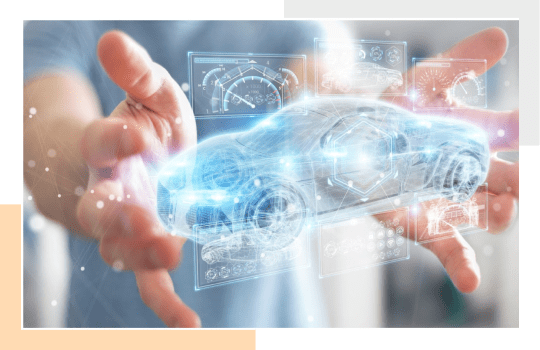
AUTOSAR is the universal language of modern automotive software. OEMs and tier-1s are often cornered by vendor lock-ins, facing integration nightmares and mounting costs. AUTOSAR mitigates such issues by eliminating the disparities between ECUs, creating a unified and predictable environment.
Embitel provides comprehensive AUTOSAR solutions tailored for today’s automotive challenges.
Our expertise encompasses BSW (Basic Software) configuration, MCAL (Microcontroller Abstraction Layer) development, and specialized CDD (Complex Device Driver) creation.
Our AUTOSAR Success Stories
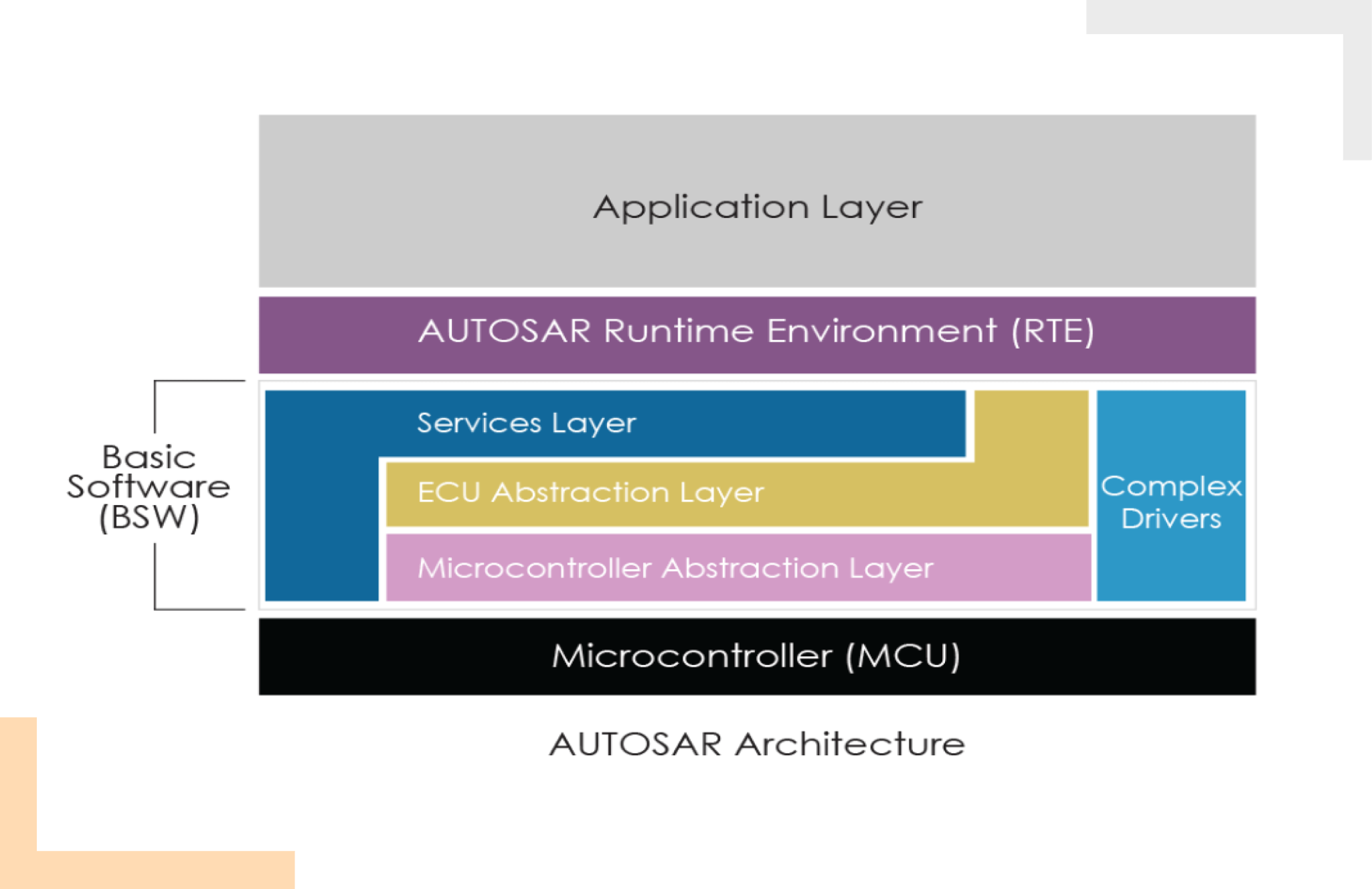
Development of AUTOSAR Compliant FLS Driver and Configuration Tool
Embitel developed an FLS driver per AUTOSAR specifications, separating the watchdog reset function from the main function, and resolving the timer reset challenge. Additionally, a Python-based tool was crafted for configuring the FLS driver according to parameters. We also assisted in the integration of the FLS driver with the system's other modules.
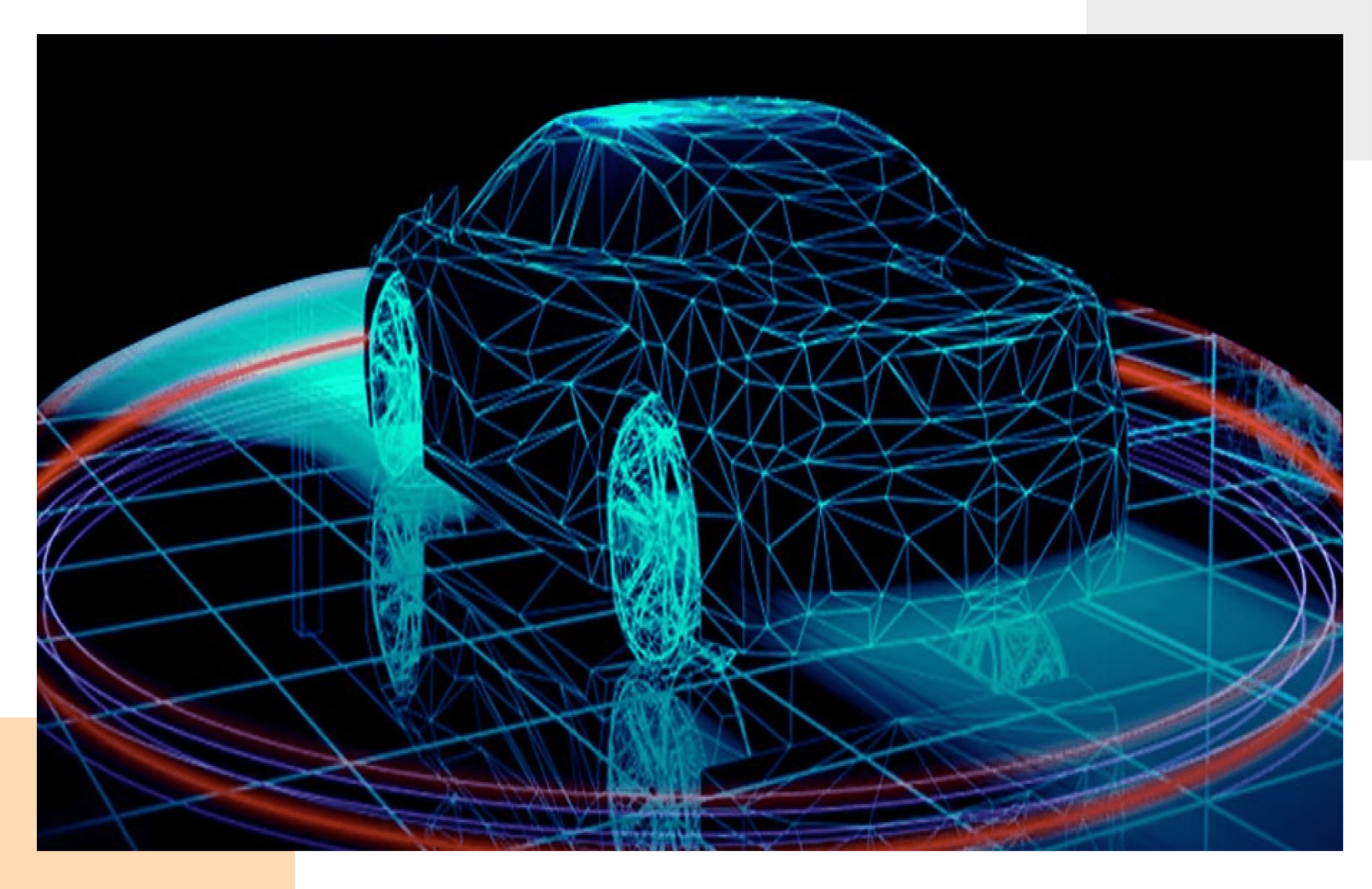
AUTOSAR Compliant ECU Software Development
We developed AUTOSAR compliant ECU software to control camera positions at the car's front and rear, thereby managing its front and rear views. Using the DaVinci Developer tool, we crafted the software architecture and modeled each component with TargetLink 3.1, which also enabled automated code production.

AUTOSAR MCAL, BSW And RTE Integration for an Automotive Tier-1
We supported an automotive tier-1 in transitioning the Battery Monitoring ECU software to a new microcontroller while migrating from a legacy to AUTOSAR architecture. By using tools like COMASSO and Vector Da-Vince, we successfully redesigned the ECU architecture, ensuring a harmonious integration of both AUTOSAR and non-compliant components.
A Handbook on AUTOSAR & ISO26262 Compliant MCAL
Learn about AUTOSAR Architecture of MCAL,
Configuration & Code Generation Tools, MCAL Driver Development
and Testing
A Handbook on AUTOSAR & ISO26262 Compliant MCAL
Learn about AUTOSAR Architecture of MCAL, Configuration & Code Generation Tools, MCAL Driver Development and Testing

Features of our AUTOSAR services
Model-Based Development (MBD)
Use of MBD expertise and tools for design
and development to be carried out using
high-level graphical models rather than
traditional manual coding.
Tool Chain Expertise
Proficiency in popular AUTOSAR
development tools like ARCCORE, DaVinci
Developer, EB tresos, and Vector tools.
ISO 26262 Compliance
We are proficient in ISO 26262 standard
and methodologies to implement
Functional Safety in AUTOSAR.
ASPICE Expertise
Understanding and expertise in ASPICE
process framework, which assists in the
development of AUTOSAR compliant
automotive software systems.
Migration Support
We assist customers in transitioning
smoothly to AUTOSAR from non-AUTOSAR
systems.
Networking and Communication
Our readily available stacks including CAN,
LIN, FlexRay, UDS, DolP and Ethernet
expedite AUTOSAR compliance.
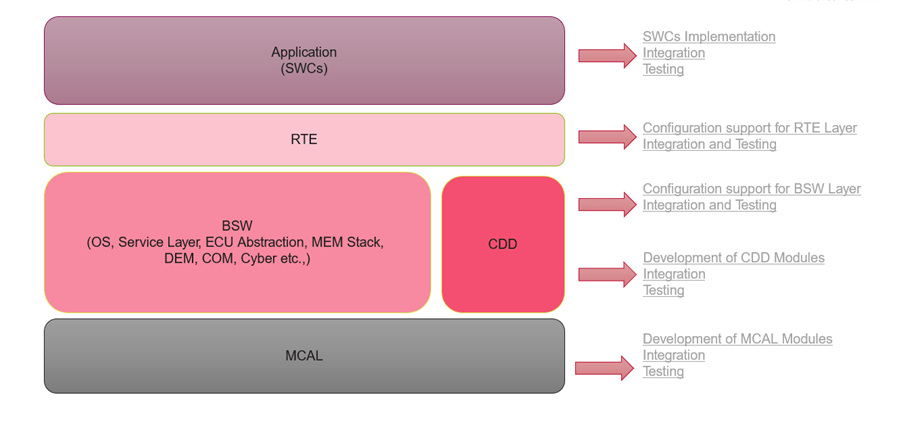
Embitel’s Service Offerings for AUTOSAR Software Development

Configuration support for BSW Layer Integration and Testing
- ECU extraction from the system description.
- BSW stack configuration and code generation using tools (EB Tresos, Vector DaVinci, and our own Python-based code generator).
- Support for individual component development and interfaces with dependent modules.
- Operating system configuration for single-core and multi-core processors.
- BSW layer migration with the latest AUTOSAR version.
- Conflict resolution for integration with varies sources of software and libraries.
- Static test according to the MISRA C:2012 Standard.
- Unit tests with 100% code coverage.
- Integration tests are performed with automation tests and some manual tests.
- Automated code generation, build, and post-build activity tool chain support.
- Software builds, component tests, and smoke tests are performed in a continuous integration environment.
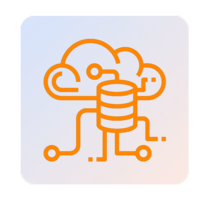
Migration to AUTOSAR
- Gap analysis and strategy development.
- Design, develop, and integrate AUTOSAR-compliant software components.
- Support for both standard and complex device drivers.
- Configuration of the Runtime Environment (RTE) according to the specific needs of the project.
- We offer comprehensive testing services, including unit testing, integration testing, and system testing post migration.
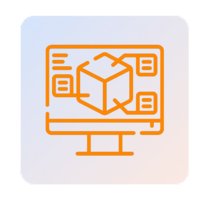
Development of CDD Modules Integration and Testing
- Design and implementation of custom CDD modules tailored to unique hardware.
- Support for interface development for CDD and AUTOSAR RTE and MCAL.
- Integration and testing of complex device drivers.
- Implementation of comprehensive diagnostic routines and error handling mechanisms within the CDD.
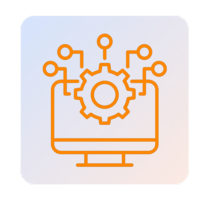
Configuration support for RTE Layer Integration and Testing
- Automated generation of RTE from System Description (ARXML files) using standard tools like DaVinci Developer, EB tresos, etc.
- Custom RTE configurations based on the specific needs of the project.
- RTE and Basic Software Scheduler Implementation.
- Development and integration of communication paradigms.
- Implementation of modes handling for smooth operational state transition.
- External and internal trigger configurations.
- Variant and development error handling.
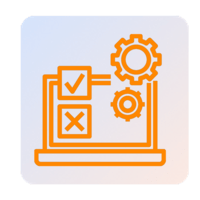
Application Layer- SWCs Integration and Testing
- Model-based development (MATLAB Simulink, DaVinci Developer, etc.).
- Control algorithm development with C programming.
- Legacy code to model conversion or AUTOSAR conversion./li>
- Interface with the RTE layer.
- Integration with BSW libraries.
- Specific SW-C development, testing, and Integration with complete software.
Benefits of AUTOSAR Adoption
1. Standardization
Offers a uniform software architecture, enabling interoperability and easier integration of third-party software.
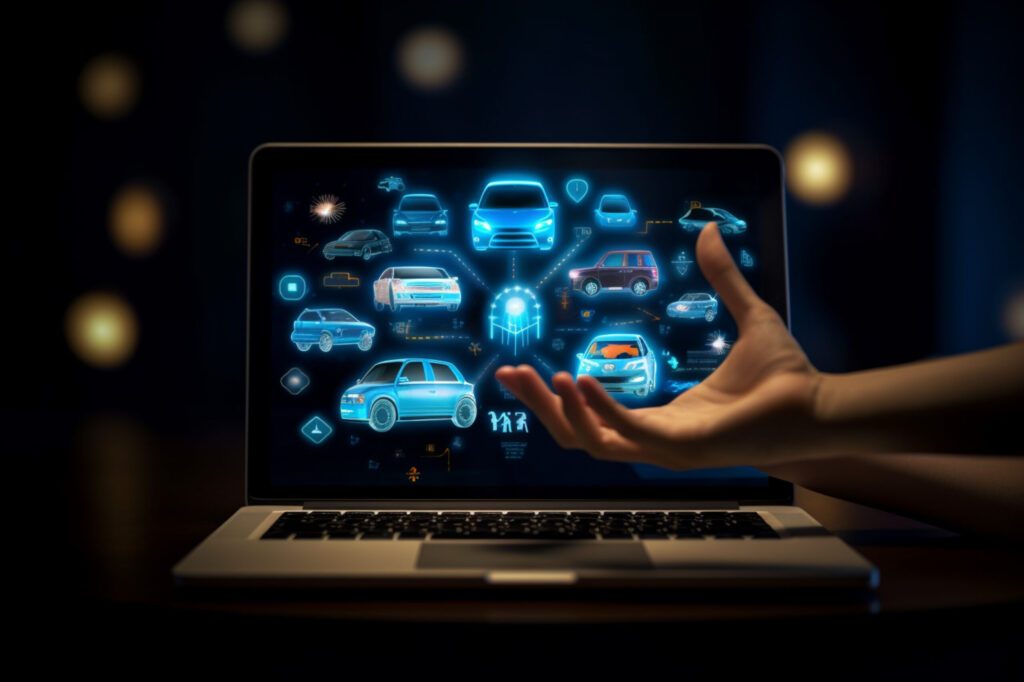
2. Flexibility
Modular approach allows easier adaptation to different vehicle platforms and variations.
1. Standardization
Offers a uniform software architecture, enabling interoperability and easier integration of third-party software.

2. Flexibility
Modular approach allows easier adaptation to different vehicle platforms and variations.

3. Cost-Efficiency
Reduces development costs through reusable software components and common standards.

4. Time-to-Market
Speeds up development processes due to standardized components and processes, leading to quicker releases.

3. Cost-Efficiency
Reduces development costs through reusable software components and common standards.

4. Time-to-Market
Speeds up development processes due to standardized components and processes, leading to quicker releases.

5. Safety Compliance
Facilitates alignment with safety standards such as ISO 26262.
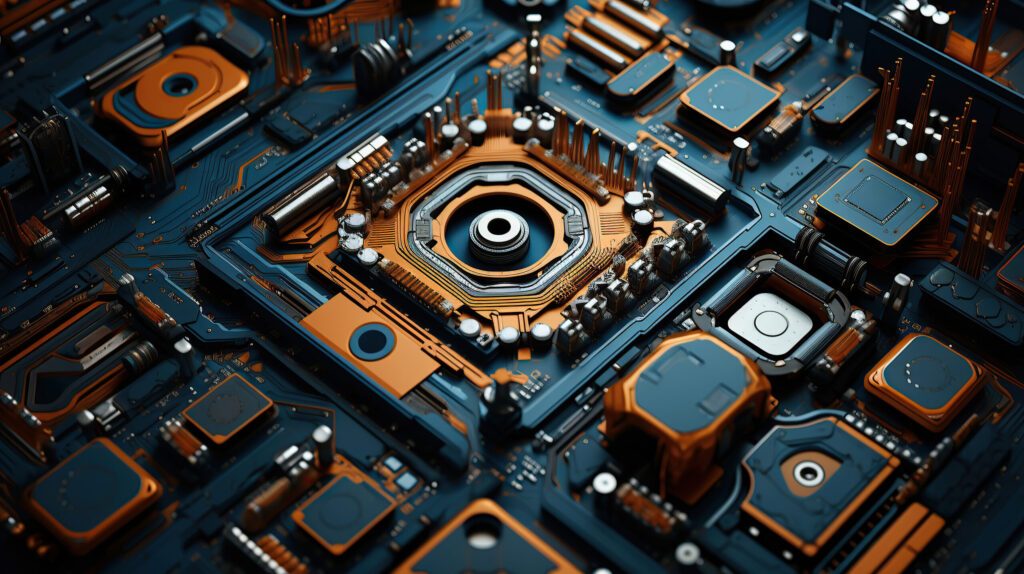
6. Interoperability
Easier integration with different ECU hardware platforms and software components from various suppliers.

5. Safety Compliance
Facilitates alignment with safety standards such as ISO 26262.

6. Interoperability
Easier integration with different ECU hardware platforms and software components from various suppliers.
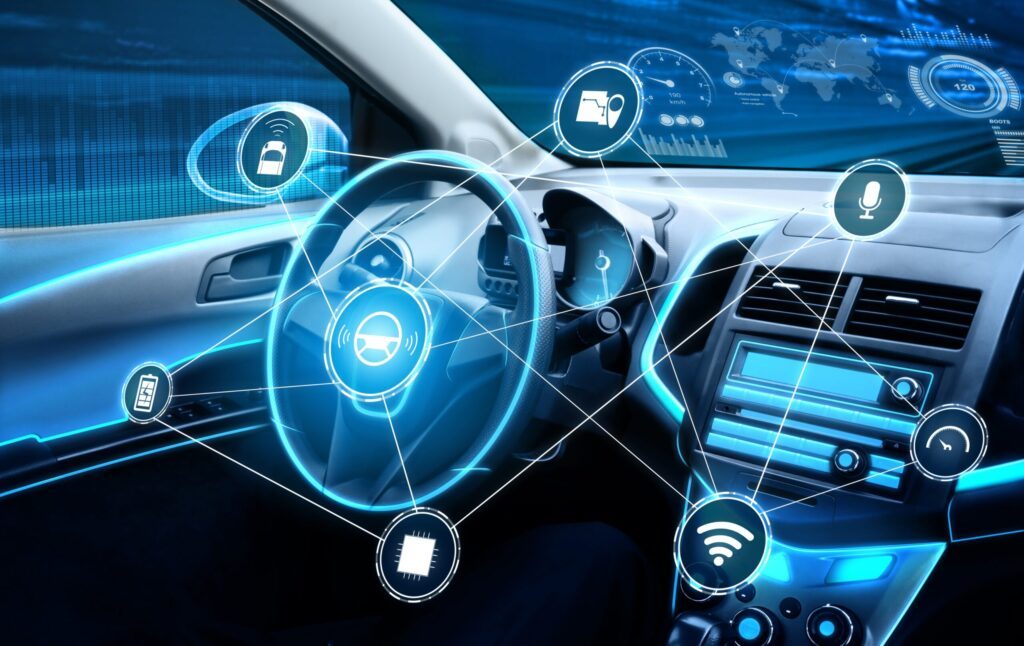
7. Future-Proof
Supports evolving automotive trends like electrification, connectivity, and autonomous driving.

8. Improved Quality
Reduction in system errors and increased stability due to the use of standardized and tested components.

7. Future-Proof
Supports evolving automotive trends like electrification, connectivity, and autonomous driving.

8. Improved Quality
Reduction in system errors and increased stability due to the use of standardized and tested components.

9. Ecosystem Advantage
Access to a broader ecosystem of tools, components, and expertise within the AUTOSAR community.

10. Collaboration.
Encourages partnerships and collaborations between OEMs, Tier-1s, and other industry players

9. Ecosystem Advantage
Access to a broader ecosystem of tools, components, and expertise within the AUTOSAR community.

10. Collaboration.
Encourages partnerships and collaborations between OEMs, Tier-1s, and other industry players
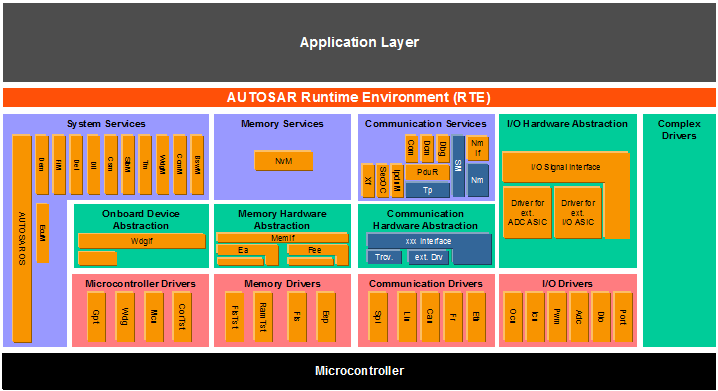
AUTOSAR Architecture
Customer FAQs About AUTOSAR MCAL, BSW, RTE and AUTOSAR Testing Services
Ans. Our AUTOSAR Software developers have in-depth expertise and project experience in AUTOSAR MCAL driver development.
We have partnered with automotive leaders for the development of microcontroller drivers such as PT driver and MCU driver; Communication drivers like CAN, LIN, FlexRay and MOST and I/O drivers like ICU, PWM, ADC, Flash, and EEPROM.
Our AUTOSAR software development team has partnered with customers for the development of static file of the microcontroller driver and the AUTOSAR MCAL driver configuration.
Ans. Embitel provides product engineering services for AUTOSAR BSW layer development. It includes configuration of memory stack (MemStack), AUTOSAR
communication stack (COMStack like CAN, LIN, FlexRay) and DCM (Diagnostic Communication Manager).
The configuration of the Operating System is also a part of the AUTOSAR BSW layer development.
Ans. It is a non-AUTOSAR component which has access to the services of the AUTOSAR MCAL and also has an interface with the AUTOSAR compliant Application Layer.
A CDD is designed to access the AUTOSAR application layer and AUTOSAR MCAL layer without having to communicate via the BSW and RTE Layers.
It is commonly used to integrate additional hardware components to AUTOSAR compliant Electronic Control Units (ECU).
Ans. We provide support in development of ISO 26262 Functional safety compliant CDD.
We support in validating the CDD by creating Test environment which includes Test Application, MCAL Drivers and AUTOSAR OS.
In case of non-availability of MCAL Drivers or OS; we can support in CDD validation by
- Creation of stubs that replicate MCAL Driver
- Deploying a Simple Scheduler to replicate AUTOSAR OS.
We also provide support in integration of CDD with existing configuration.
Ans. Yes, we provide support for configuration of diagnostic messages according to the project requirements.
The configuration sequence details are discussed in detail during the AUTOSAR Technology Workshops as part of our SLA.
Ans. Yes, we provide support for the configuration of the interface layer as per your project/application requirement.
Ans. Yes, our AUTOSAR software developers have expertise in the configuration of the AUTOSAR RTE (Real Time Environment), that serves as an interface between the application software module (SWC) and the AUTOSAR BSW.
Ans: Yes, our AUTOSAR software development team has delivered projects on the latest versions of AUTOSAR ( from AUTOSAR 4.0 to AUTOSAR 4.3).
We have also worked on projects based on earlier versions of AUTOSAR software.
Ans.Yes. Our AUTOSAR software development team has successfully partnered with global OEMs’ and Suppliers for migration to AUTOSAR 4.3.
We can share the success stories of our customers after signing the NDA agreement.
Ans. We have delivered projects on configuration and code generation based on AUTOSAR tools like Comasso, Vector, ECU Spectrum, KSAR AUTOSAR.
We also have experience in working with design tool DaVinci Developer and scripting tools based on Pearl and Python.
Ans. As part of our AUTOSAR Testing suite, following testing services are included:
- Module Testing,- individual AUTOSAR modules are tested for various test-case scenarios. This is White Box testing.
- Integration test – after integration of individual AUTOSAR modules, we perform integration testing based on relevant test-case scenarios. This is also a White Box Testing.
- System level testing (end application layer testing). – This is Black Box testing where we test the entire product/embedded system.
Write to us to know more detailed information about our testing services.
Ans. Yes. The application development can be done based on the specification of the project. We have expertise in both manual coding and tool-based code generation.
Our team of software development engineers has extensive experience in manual coding implemented in Embedded C.
We also have expertise and experience in working with the code generation tools like Matlab, Vector, Comasso and much more.
A Handbook on AUTOSAR BSW & RTE
Learn about AUTOSAR Architecture and Configuration process of the
Base Software (BSW) & Real-Time Environment (RTE)
A Handbook on AUTOSAR & ISO26262 Compliant MCAL
Learn about AUTOSAR Architecture of MCAL, Configuration & Code Generation Tools, MCAL Driver Development and Testing

Blogs on AUTOSAR Architecture: Learn about AUTOSAR MCAL, AUTOSAR Communication Stack and more
- What is AUTOSAR MCAL? Learn about the software module architecture and device drivers
- What is AUTOSAR Communication Stack (ComStack)? Introduction to CAN Communication Stack
- What is AUTOSAR Memory Stack | Software modules and device drivers
- What is AUTOSAR development partnership and AUTOSAR MCAL Layer
- Decoding the “Component Concept” of the Application Layer in AUTOSAR
- Decoding the Implementation of UDS Vehicle Diagnostics in AUTOSAR Base Software Module
- Adaptive AUTOSAR vs Classic AUTOSAR: Which Way is the Automotive Industry Leaning?
- How to Leverage Model Based Development for Delivering AUTOSAR Software Components?
Knowledge bytes
- What is AUTOSAR MCAL?
(Source – Renesas)
- What is AUTOSAR layered architecture?
- Basic Software (AUTOSAR BSW): Basic Software is the standardized software layer, which provides services to the AUTOSAR Software Components and is necessary to run the functional part of the software. It does not fulfill any functional job itself and is situated below the AUTOSAR RTE (Runtime Environment). The Basic Software contains standardized and ECU specific modules.
- Runtime environment (AUTOSAR RTE): Middleware which abstracts from the network topology for the inter- and intra-ECU information exchange between the application software components and between the Basic Software (BSW) and the applications.
- Application Layer: application software components that interact with the runtime environment (RTE).
- Why migrate to AUTOSAR architecture from legacy software?
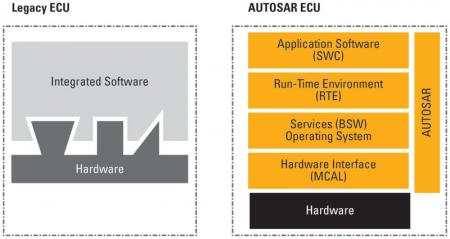
- Benefits of migrating to AUTOSAR architecture:
- Improved reuse of ECUs in new car platforms and architectures
- Improved use of pre-validated and tested software components (representing vehicle functions)
- Reduced testing and safety certification costs
- Reduction in downstream design errors—an AUTOSAR methodology allows functions to be defined and verified at an architectural level
- Reduction in overall hardware cost by improved AUTOSAR network management and capacity utilization
- Reduced costs in overall network architecture analysis and design reviews
- Improved communication between OEMs and Tier 1 suppliers, by using a standardized digital exchange format (AUTOSAR XML or arxml)
(Source – RTC Magazine)
- Which tools are used for AUTOSAR software development and AUTOSAR 4.3 Migration? What are their roles?
A number of AUTOSAR tools are deployed to develop an AUTOSAR compliant software. These tools are also very important for projects involving migration to AUTOSAR 4.3 or other versions.
Here is a list of tools that our AUTOSAR software developers are expert in:
- COMASSO: COMASSO is a registered association that supports implementation of the AUTOSAR Architecture as per the common global standard. (Source- https://www.comasso.org/).COMASSO provides a technical platform to the AUTOSAR software developers in order to reduce the integration efforts in software exchange or re-use.COMASSO as a platform facilitates AUTOSAR developers to maintain and develop AUTOSAR BSW as part of a community, which is similar to an Open Source community.COMASSO technical platform also helps the developers exchange source code, information and experience to implement AUTOSAR BSW.
- KPIT K-SAR AUTOSAR Suite: It is used by AUTOSAR Software developers to configure and generate AUTOSAR BSW (Base Software) and AUTOSAR RTE (Run-time Environment).The tool comprises of basic AUTOSAR Software Stack and K-SAR Editor.
- DaVinci Developer Tool from Vector: It is a development tool for designing the architecture of software components, that need to be deployed in AUTOSAR based Electronic Control Systems.It is used in application development phase of AUTOSAR software development projects.One of the tool’s biggest advantage is its ability to link model based development (MBD) tools via ARXML (a file format introduced by AUTOSAR to contain data used in Electronic Control Unit(ECU) development as per the AUTOSAR Architecture)
(Source – RTC Magazine)


